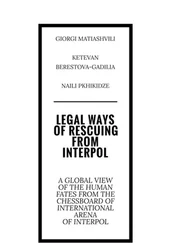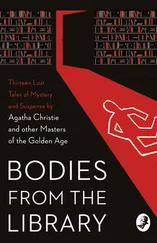The doctor engaged in occasional potation in a neighborhood saloon — an establishment owned and operated by a big man named Henry Geldermann. Herr Geldermann’s principal claim to renown was that he could slide a foaming stein of beer father along a mahogany bar, without spilling a drop, than any other bartender on the North Side. Geldermann was also a pioneer among users of the whisky glass with the false bottom, and partly as a result of such path finding, he had long enjoyed a cordial relationship with the receiving tellers of a local German-American bank. His fortune, in fact, was known to be in the neighborhood of $75,000.
Geldermann’s wife, Ida, was a middle-aged blonde. In the normal course of events, it is highly improbable that Dr. Meyer would have looked at Ida a second time, for she was not attractive. However, the fact that Meyer was badly pressed for money — a normal state with him, since he bought lavish gifts for his women — coupled with the fact that Mrs. Geldermann would, in the event of her husband’s demise, come into a handsome competence, threw a different and highly intriguing light on the woman.
When, in casual conversation with Ida Geldermann in the tables-for-ladies section of her husband’s saloon, the physician learned that Mrs. Geldermann was restless because her spouse was more interested in his bank balance than in her, the first faint shadows of coming events began to fall. Dr. Meyer suddenly appeared to be solicitous of Henry Geldermann’s health. Geldermann insisted that he felt wonderful. Meyer shook his head doubtfully and said he would not be responsible for the consequences if Geldermann didn’t come to his office for a thorough examination. Meyer found so many things wrong with the saloonkeeper, by way of beginning treatment, that Geldermann wondered how he had ever reached the age of forty-five. In two months Henry Geldermann was dead from what his physician described as “complications.” Dr. Meyer permitted a respectable length of time to elapse and then declared his love for Geldermann’s widow.
“But you are married,” said Ida Geldermann.
“I won’t be much longer,” said the doctor. He explained that his wife’s health had for some time been deteriorating, despite his utmost professional efforts, and that the end was not far off. Nor was it. Lena Meyer passed away one night with only her husband at her bedside. After the funeral, her brother, who had always held the doctor in something less than esteem, called at the Meyer home to have a talk with the physician. The brother wanted to know why, if his sister had been so sick, her relatives had not been advised until after her death. Getting no response to his summons at the front door, the brother forced his way into the house. He discovered Dr. Meyer and a pretty young lady in the very bedroom where Lena Meyer had died seventy-two hours before. Such behavior on the part of the doctor hardly squared with his protestations at the graveside that life without Lena would be hardly worth living. In the meantime, several brothers and sisters of Henry Geldermann were just recovering from the shock of having found themselves specifically excluded from the saloonkeeper’s will. Dr. Meyer, it developed, had prevailed upon his patient to have a new deathbed document drawn up. Everything, it now developed, was left to the widow. It was inevitable that the brother of Mrs. Meyer and the kin of Henry Geldermann would get together, compare notes, and become suspicious. When they relayed their suspicions to the Cook County State’s Attorney, exhumations were ordered.
Thus it was found that each body contained a suspicious amount of strychnine.
Preparations for the nuptials of Dr. Meyer and the widow Geldermann were rudely interrupted, when both were indicted for murder. Meyer was charged with the death of his wife and of Geldermann. Mrs. Geldermann was charged with aiding Meyer in the fatal poisoning of her husband.
The physician had a visitor an hour after he was clapped in jail — a sharp-eyed, white-haired gentleman with a strong breath and dandruff on the collar of his blue serge suit. The caller was a lawyer who was known far and wide as “Habeas Corpus” O’Brien. He was a clever legal hawk with an unerring eye for a loophole.
O’Brien gravely listened to Dr. Meyer protesting his innocence, and that of his bride-to-be.
“I’ll take the case,” he said bluntly, “for a down payment of five thousand dollars.”
“I don’t have that much money,” said Dr. Meyer. The barrister glared at Meyer.
“Get it,” he advised, “from Mrs. Geldermann.”
O’Brien, his retainer pocketed, excavated ancient, obscure and interpreted statutes and fashioned habeas corpus proceedings of them. For weeks, no judge in Chicago could feel safe in banging his gavel for the opening of court without running the risk of having to listen to a motion by Meyer’s solicitor.
When the air was finally cleared of oratory, argument and foolscap, the case against Ida Geldermann, not too strong in the first place, had been nol-prossed. Dr. Meyer was released on moderate bail.
Dr. Meyer and Ida Geldermann promptly married. Now O’Brien obtained delay after delay in Meyer’s trial. His game, found sound by many a criminal lawyer, was that the more time that could be put between the commission of a crime and the trial of the person who committed it, the greater the chance of prosecution evidence weakening through fading memories or a switch in public sentiment. Then there was always the chance of that happiest of all events: the death of a prosecution witness.
O’Brien, who possessed the instincts of a public-relations counselor, now decided to make Dr. Meyer a hero instead of a villain. Since all of Chicago was thoroughly convinced that the little medico was dripping with guilt, O’Brien’s job was not an easy one.
O’Brien asked Meyer, “Are you any good at treating kids?”
“I’ve never treated children,” said Meyer.
“From now on,” said O’Brien, “you are specializing in them, especially crippled kids. Treat them free of charge and see that everybody knows about it.”
A curious thing happened. Meyer seemed to have an almost supernatural touch with children. Several boys and girls who had been crippled for years walked again after he manipulated their joints. In a matter of months, his renown spread the length and breadth of the city. Other doctors brought difficult cases to him, often with highly satisfactory results. Superstitious folk in the foreign neighborhoods looked upon the little man who stood accused of murder as a great healer, a sort of miracle man. Some days the halt and the lame were lined up for half a block from his office.
Dr. Meyer arose, phoenix-like, from his own ashes. Fellow physicians interceded for him with the State’s Attorney’s office, asking that the indictment against him be dismissed. Sentiment on the part of parents whose children Dr. Meyer had treated free of charge was crystallized by O’Brien. Large delegations camped in the corridors of the Cook County Court House and picketed the homes of assistant state’s attorneys. They chanted poems and catch phrases, demanding that Dr. Meyer be cleared.
The State’s Attorney’s office, carefully considering the problem, realized that the chances were slim indeed of drawing a jury that would convict a man of Dr. Meyer’s new status. It was considerably more difficult to prove a poison charge then, than it has been in recent years. So, the murder charge against Dr. Meyer was dropped.
Dr. Meyer had gone to considerable trouble to reach a position whereby he was married to a wealthy woman. But while he had been a success publicly, he had been a dismal failure privately. His second wife, it turned out, had decided to hold onto her money. He had tried everything he could think of, including hypnotism, to pry her loose from it. But he met with nothing but rebuffs.
Читать дальше












